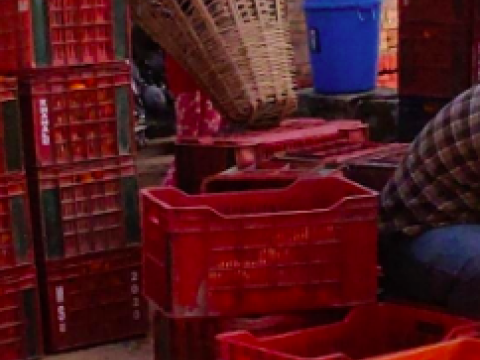Farmers in Nepal
Image: Woman with Cane Basket, Crates filled with oranges from orange orchards in Panauti Nepal. These orchards are sold by the farmers’ families while the profit goes to the landowners and they only earn a part of the profit made on the crop since they do not own the lands anymore due to brain-drain, high taxes and the push for privatization by the government. While this allows them to pic up other means of sustenance and livelihood in off-peak seasons, it is a sad reminder that the culture of this region where land remained within families for generations to come is slowly disappearing and the farmers have to rely on the employers for their wages rather than on themselves.
Farmers slowly have stopped owning land in this particular village in Nepal due to a combination of reasons. This renders them at “the mercy” so to say of commercial farmers, and there are problems with financial compensation. Agricultural land per capita has also decreased due to the combined effect of several factors including inheritances, loss of agricultural land to urbanization, and the degradation of land [2]. Most farmers grow rice, maize, and wheat at a substance level. These crops are characterized by comparatively low yields compared to other countries in the region [1]. Samriddhi [9] shows that around three-fourths of farmers produce crops for home consumption. While it is clear that agriculture is vital to the Nepalese economy, low investment in the sector has resulted in relatively low productivity when compared with other such comparable regions.
By Chaaru Jain as part of the LUC project "Decolonising the Plate" led by Dr. Maja Vodopivec
